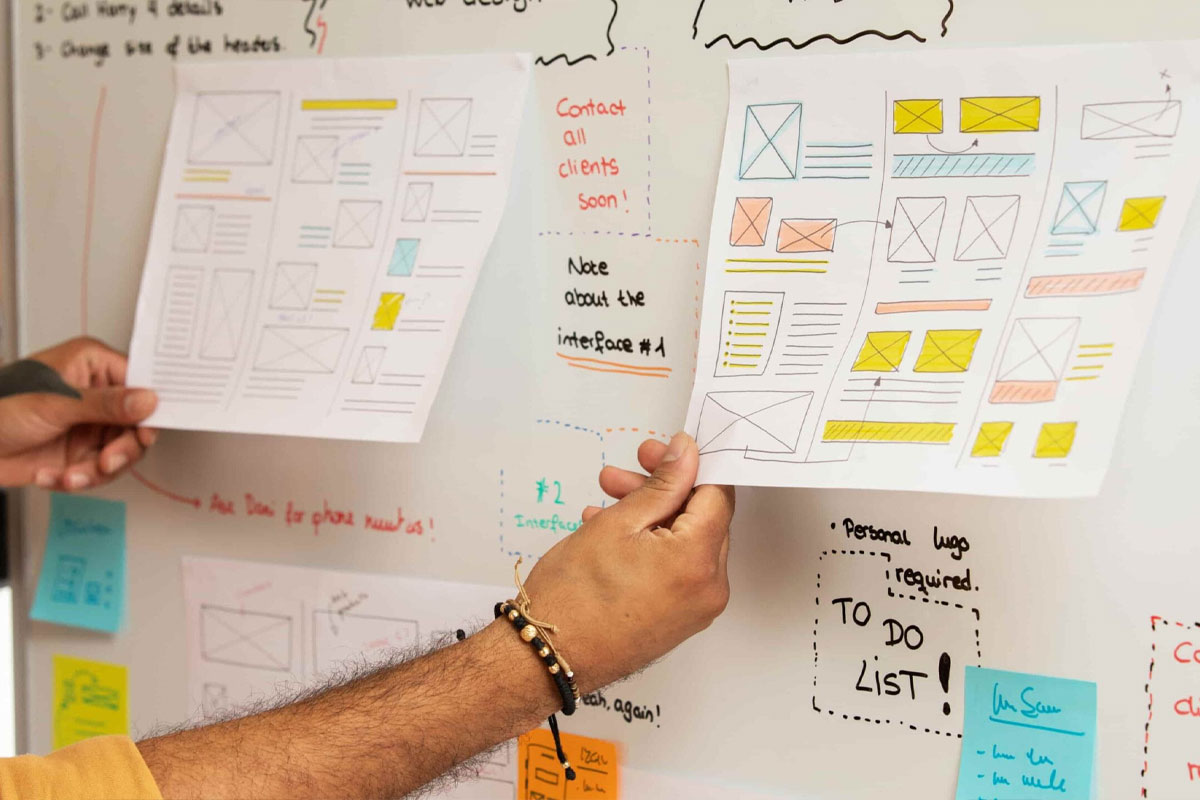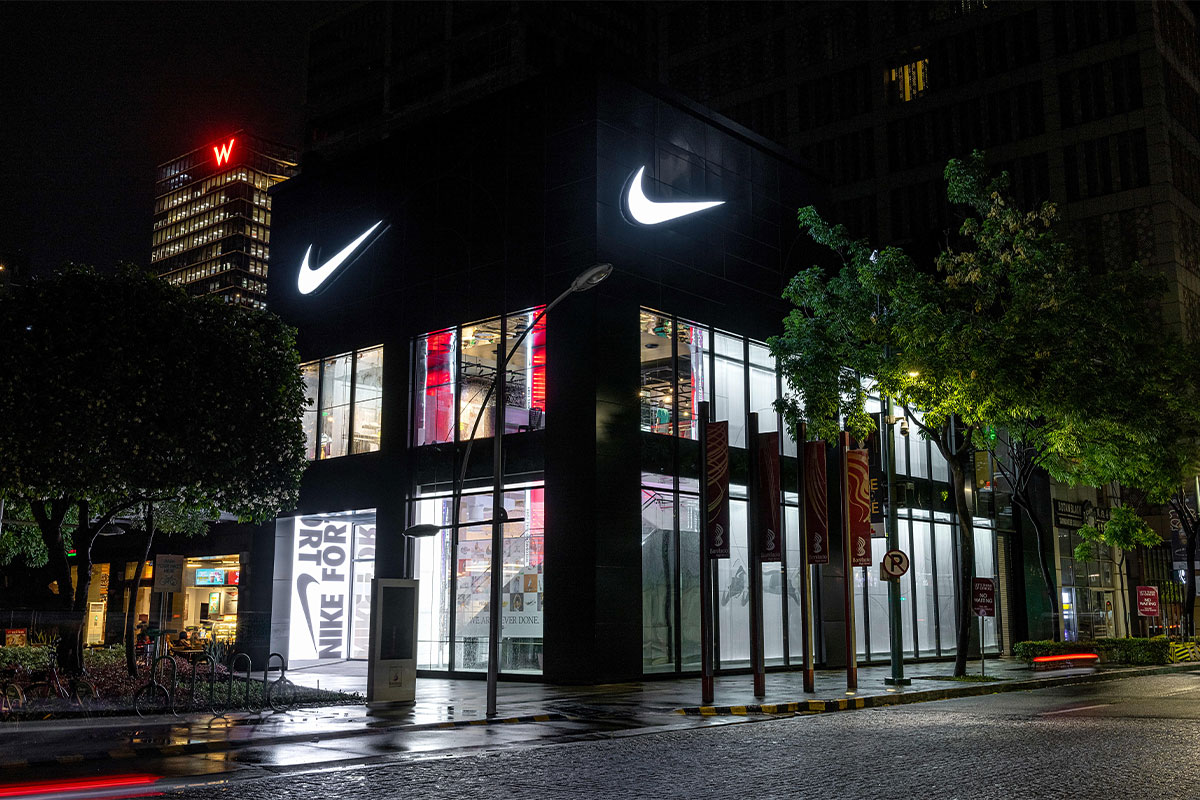What Does the Future of UX Hold?

[01]
blog info
UX design started with making things usable. Now it's evolving into something more ambitious: making things anticipatory.
The future of UX isn't just about responding to user actions. It's about predicting needs, adapting to context, and creating experiences that feel less like tools and more like intelligent partners.
This shift is happening now. AI analyzes behaviour patterns. Voice interfaces replace typing. AR layers digital information onto physical spaces. These aren't distant possibilities. They're already changing how we design products.
Here's where UX is heading and what it means for how we build digital experiences.
What Is UX Design?
User experience design is the practice of creating interfaces that revolve around real people and their goals. Every interaction, from first encounter to final action, should guide users smoothly toward what they're trying to accomplish.
Don Norman pioneered user-centred design at Apple in the 1990s. His core principle: design should adapt to human behaviour, not force humans to adapt to technology.
Jakob Nielsen's usability research revealed how people actually use interfaces. They scan in F-patterns. They make judgments in 50 milliseconds. They bail when things get confusing.
Good UX combines understanding psychology, testing with real users, and iterating based on evidence. It's not about making things pretty. It's about making things work for people in real contexts with real constraints.
The discipline has evolved from basic usability to sophisticated, data-driven personalization. What started with "can users complete this task?" has expanded to "can we anticipate what users need next?"
How UX Design Evolved
The 1980s: Graphical Interfaces
Susan Kare designed the original Mac icons. She turned computers from specialist tools into everyday devices. Windows, menus, and visual metaphors made computing accessible.
Before this, computers required command-line knowledge. Interfaces were barriers. Kare's work proved that design could democratize technology.
The 1990s: Web Design Challenges
The web introduced new constraints. Pages needed fast loading times. Navigation had to work without instruction manuals. Alan Cooper invented the persona method, helping designers understand users beyond demographics.
Information architecture became critical. How do you organize thousands of pages so people can find what they need? Card sorting and tree testing emerged as research methods.
The 2000s: From Skeuomorphism to Flat Design
Early iPhone interfaces mimicked real-world objects. Calculators looked like physical calculators. Notepads had paper textures. This familiarity helped users transition to touch interfaces.
Apple's iOS 7 killed skeuomorphism. Flat design emphasized simplicity and clarity over realism. Microsoft's Metro design and Google's Material Design followed with their own minimal approaches.
The 2010s: Mobile-First and Responsive Design
Smartphones became primary devices. Designers stopped treating mobile as an afterthought. Responsive design meant interfaces adapted to any screen size.
Touch interfaces demanded new thinking. Tap targets needed proper sizing. Swipe gestures replaced clicks. Navigation patterns shifted from desktop conventions to mobile-native approaches.
The 2020s: AI and Personalization
Machine learning enabled interfaces that adapt to individual users. Netflix recommends content based on viewing patterns. Spotify creates personalized playlists. Amazon predicts what you'll buy before you search.
Voice interfaces went mainstream through Alexa, Siri, and Google Assistant. Natural language processing improved to the point where conversations felt almost human.
Accessibility became mandatory, not optional. WCAG guidelines established standards. Dark mode reduced eye strain. Inclusive design benefited everyone, not just users with disabilities.
Current UX Trends Shaping Design
Cross-Platform Experiences
Users expect seamless transitions between devices. Start on mobile, continue on desktop, finish on tablet. The experience should feel continuous, not fragmented.
Progressive Web Apps blur the line between web and native apps. They work offline, send notifications, and install like apps while remaining accessible through browsers.
Designers must consider how information persists across platforms. Cloud sync, session continuity, and consistent interfaces across devices all matter.
Motion Design
Motion serves function beyond visual appeal. Loading animations communicate that processes are running. Hover effects show interactive elements. Transitions help users understand navigation changes.
Well-crafted animations make interactions smoother and more enjoyable. They provide feedback, guide attention, and create delight in micro-moments.
Tools like After Effects and Principle help designers create sophisticated motion. Lottie enables animations to work across platforms with small file sizes. Motion is no longer decoration. It's core to usability.
Personalization Through Data
AI analyzes browsing patterns, purchase history, and interaction data to create unique experiences for each user. Amazon's recommendation engine drives 35% of revenue through personalization.
Behavioural analytics tools like Hotjar and Mixpanel reveal how users actually interact with interfaces. Heat maps show where people click and scroll. Session recordings capture real usage patterns.
This data drives design decisions. Not assumptions. Evidence. What works for one user segment might fail for another. Personalization serves the right content to the right users.
Conversational Interfaces
Chatbots and voice interfaces let users interact through natural language. Advanced natural language processing makes conversations feel almost human.
ChatGPT demonstrated conversational AI's potential. Companies now integrate similar technology into customer service and product discovery. These interfaces feel intuitive because they mirror human communication.
Voice User Interfaces continue growing. Smart speakers, car systems, and mobile assistants all rely on voice interaction. Designers must consider audio feedback, error handling, and conversation flow.
Microinteractions
Small moments create big impact. Button colour changes on hover. Pull-to-refresh animations. Notification sounds. These subtle details make experiences more delightful and human.
Microinteractions provide instant feedback and prevent errors. Loading spinners tell users that processes are running. Form validation shows errors immediately instead of after submission.
Well-designed microinteractions guide users through complex processes. They make technology feel responsive and alive. As interfaces become more sophisticated, these details become increasingly important.
The Future of UX: What's Next
AI-Powered Anticipatory Design
Current interfaces react to user actions. Future interfaces will predict needs before users articulate them.
If you typically order coffee at 8 AM, your app might show nearby coffee shops first thing in the morning. If you're travelling, interfaces adapt to show relevant information for your location and context.
Predictive analytics will surface information users didn't know they needed. Not through guessing. Through pattern recognition across millions of data points.
How this changes design:
- Fewer menus and navigation layers (right content appears automatically)
- Context-aware interfaces that shift based on time, location, and behaviour
- Proactive suggestions instead of reactive search results
- Less cognitive load on users (systems handle memory and planning)
The challenge: Prediction without creepiness. Users need to feel helped, not surveilled. Transparency about data usage and clear control over personalization become critical.
Voice and Gesture Interfaces
Screens won't disappear, but they'll become optional for many tasks. Voice commands handle simple actions. Gesture recognition enables control without touch.
Apple's Vision Pro and similar spatial computing devices point toward interfaces that blend physical and digital spaces. Eye tracking, hand gestures, and voice work together for natural interaction.
Design implications:
- Audio feedback becomes as important as visual design
- Error handling must work without screens (how do you communicate problems through voice?)
- Conversation design emerges as a distinct discipline
- Multimodal interfaces combine voice, gesture, and traditional input
The opportunity: Hands-free, eyes-free interaction expands where and how people use technology. Cooking while following a recipe. Driving while getting directions. Working while managing notifications.
Augmented Reality Integration
AR layers digital information onto physical spaces. Not as a gimmick. As functional enhancement.
IKEA shows furniture in your actual room before purchase. Navigation apps display directions overlaid on live camera views. Retail apps enable virtual try-ons for clothing, makeup, and accessories.
Where AR improves UX:
- Product visualization (see before buying)
- Spatial navigation (arrows on actual streets, not abstract maps)
- Remote assistance (experts see what you see, guide in real-time)
- Education and training (overlay instructions on physical objects)
Design challenges: AR interfaces must respect physical space. Information should enhance, not overwhelm. Placement, timing, and relevance matter more than in traditional screen interfaces.
Sustainable UX Design
Digital products have environmental costs. Server energy. Device manufacturing. Electronic waste.
Sustainable UX minimizes resource consumption throughout product lifecycles.
Practical approaches:
- Efficient code reduces server energy usage
- Optimized images load faster and use less bandwidth
- Dark mode saves battery on OLED screens
- Design for device longevity (encourage repair over replacement)
- Reduce unnecessary features that add processing overhead
Users increasingly care about environmental responsibility. Companies demonstrating sustainability commitment build stronger brand loyalty. Green design becomes a competitive advantage, not just ethical practice.
Hyper-Personalization
Current personalization segments users into groups. Future personalization treats each user as unique.
Machine learning creates individual profiles based on:
- Behaviour patterns and usage history
- Context (time, location, device, activity)
- Stated preferences and goals
- Inferred needs from related actions
Examples in practice:
- Interfaces that rearrange based on individual usage patterns
- Content hierarchies that adapt to reading behaviour
- Feature visibility that shifts based on actual usage
- Adaptive learning curves (more hand-holding for new users, shortcuts for power users)
The balance: Personalization without filter bubbles. Users need exposure to new ideas, not just reinforcement of existing preferences.
Accessibility as Standard
Accessibility stops being a feature. It becomes foundational.
Voice recognition helps users with physical impairments. Eye-tracking provides alternative interaction methods. High-contrast modes assist visual impairments.
What changes:
- Accessibility testing happens from day one, not as afterthought
- Multiple interaction modes become standard (voice, touch, keyboard, gesture)
- Captions, transcripts, and alt text are automatic, not optional
- Cognitive accessibility gets equal attention to physical accessibility
Good accessibility creates better experiences for everyone. Captions help in noisy environments. Voice controls work hands-free while driving. Clear language benefits non-native speakers and people in a hurry.
Data-Driven Decision Making
Data transforms guesswork into evidence-based design.
Analytics reveal user behaviour patterns and pain points. A/B testing compares variations to find what works best. Heat maps show which elements get attention. Session recordings capture real interactions.
How data improves UX:
- Identify where users struggle without asking them
- Measure impact of design changes quantitatively
- Validate assumptions before full development
- Personalize at scale using behaviour patterns
The limitation: Data tells you what happens, not always why. Combine quantitative analytics with qualitative research. Numbers plus empathy beats either alone.
Internet of Things Integration
IoT connects physical objects to the internet, creating seamless experiences across devices.
Smart homes demonstrate IoT's potential. Thermostats learn preferences and adjust automatically. Fitness trackers sync with health apps. Connected cars integrate with smartphones.
UX challenges in IoT:
- Designing for device ecosystems, not individual products
- Maintaining consistency across different hardware interfaces
- Handling connectivity issues and offline functionality
- Privacy and security in always-connected environments
Designers must consider how people move between connected devices. The experience should feel continuous, not fragmented across different manufacturers and platforms.
The Metaverse and Spatial Computing
Virtual worlds create persistent environments where users interact in real-time. This opens possibilities for social interaction, entertainment, and commerce beyond traditional screens.
Spatial computing changes how we think about navigation and interaction. Instead of windows and menus, interfaces exist in three-dimensional space.
Design considerations:
- Spatial interfaces need different patterns than flat screens
- Avatar representation and presence matter for social experiences
- Virtual economy and ownership create new transaction models
- Accessibility in 3D spaces presents unique challenges
These platforms are still developing. Early adopters experiment with possibilities. Designers who understand spatial computing will have advantages as platforms mature.
What This Means for Designers
New Skills Required
- Conversation design: Crafting dialogue flows for voice interfaces
- Motion design: Creating functional animations, not just decorative ones
- Data literacy: Understanding analytics and making evidence-based decisions
- Accessibility expertise: Building inclusive experiences from foundation up
- AI collaboration: Working with machine learning tools and understanding their capabilities
Mindset Shifts
- From reactive to anticipatory (predict needs, don't just respond)
- From one-size-fits-all to hyper-personalized (every user gets unique experience)
- From screen-first to multi-modal (voice, gesture, AR all matter)
- From feature-driven to outcome-focused (what users accomplish, not what's built)
- From isolated products to ecosystem thinking (how devices work together)
Ethical Considerations
More powerful tools create more responsibility.
Questions designers must answer:
- How much personalization before it becomes manipulation?
- Where's the line between helpful prediction and invasive surveillance?
- Who owns user data and how is it used?
- How do we prevent AI bias from reinforcing discrimination?
- What happens when automation replaces human judgment?
Good design serves users, not just business metrics. The future requires balancing innovation with ethics, capability with responsibility.
Preparing for What's Next
Stay curious. Technologies evolve faster than any single article can capture. What matters isn't knowing every trend. It's developing the ability to evaluate new technologies through a user-centred lens.
Practical steps:
- Experiment with emerging tools. Try AI design assistants. Build with voice interfaces. Prototype AR experiences. Hands-on learning beats theoretical understanding.
- Follow actual users, not industry hype. What problems do real people face? What frustrates them? What delights them? User needs change slower than technology trends.
- Balance innovation with fundamentals. New interfaces still need clear information hierarchy. Voice commands still need good error handling. AR still requires intuitive navigation.
- Collaborate across disciplines. Future UX requires working with AI engineers, data scientists, and ethicists. No one person holds all expertise.
- Question assumptions constantly. Just because technology enables something doesn't mean users need it. Validate before building.
The Bottom Line
UX design is shifting from making things usable to making things anticipatory. From reactive interfaces to predictive experiences. From one-size-fits-all to hyper-personalized.
This evolution is driven by AI, voice interfaces, AR, and growing environmental awareness. The tools are getting smarter. The expectations are getting higher.
What doesn't change: the need to understand real people, test with actual users, and iterate based on evidence. Technology advances, but human psychology remains relatively constant.
The best designers will balance innovation with fundamentals. They'll adopt new capabilities while maintaining user focus. They'll build experiences that feel magical without being invasive.
That's the future of UX. Not replacing human designers with AI. Empowering designers with better tools to serve users better.


